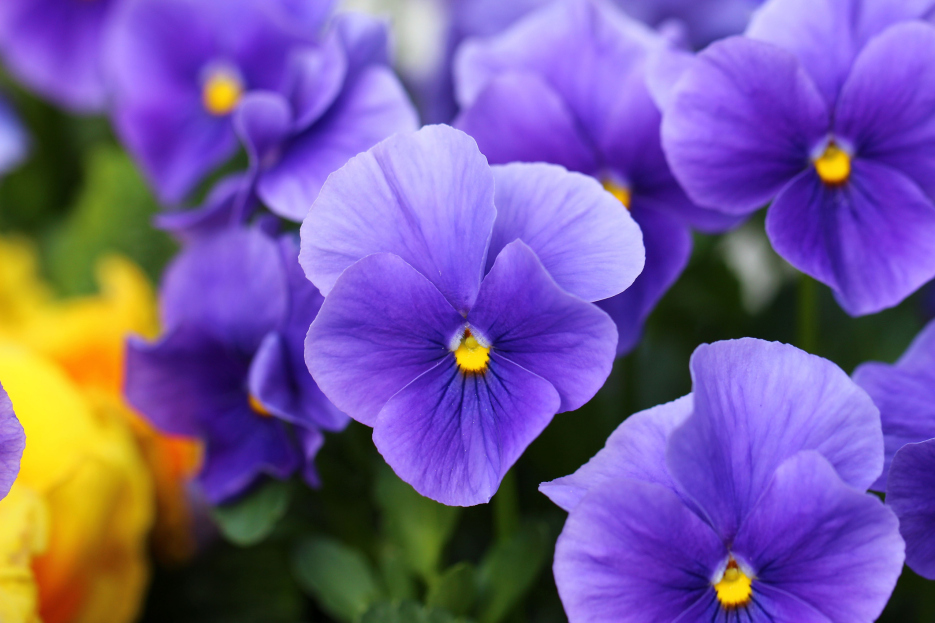
Pansies (Viola tricolor var. hortensis) are popular for their vibrant, colorful blooms and their ability to brighten up any indoor or outdoor space. Known for their wide variety of colors and patterns, they are often grown as annuals, but with the right care, they can be a delightful houseplant. Whether you’re growing them in containers or as part of your indoor garden, here's a comprehensive guide on how to care for your Pansy houseplant.
Pansies thrive in bright, indirect light. When growing them indoors, place your pansy in a location where it can receive plenty of natural light, such as near a south or east-facing window. If your home doesn’t get a lot of sunlight, you can supplement their light with a grow light, which will encourage healthy growth and vibrant blooms.
However, be cautious not to expose your pansy to direct sunlight for too long, as this can scorch its delicate leaves and flowers. Pansies generally prefer cooler temperatures, so indirect light will help them flourish without getting overheated.
Pansies prefer moist, well-draining soil, and they need consistent watering to stay healthy. The key is to keep the soil evenly moist but not soggy. Overwatering can lead to root rot, while underwatering can cause the plant to wilt and lose its vibrancy. Water your pansy when the top inch of soil feels dry to the touch, but always ensure that the pot has good drainage to prevent water from pooling at the bottom.
During the warmer months, pansies may need more frequent watering, especially if the air in your home is dry. In the winter, when the plant is less active, you can reduce watering slightly, but don’t let the soil dry out completely.
Pansies prefer a light, well-draining potting mix. A peat-based mix with added perlite or vermiculite works well to ensure good drainage. You can also add a bit of compost to enrich the soil and provide additional nutrients. When potting your pansy, make sure to choose a container with drainage holes to allow excess water to escape and prevent root rot.
If you’re growing multiple pansies in a container, be sure to give them enough space to grow. Crowding the plants can lead to poor airflow, which can increase the risk of disease. Repot your pansy every year or when it becomes root-bound, and make sure to refresh the soil to keep it nutrient-rich.
Pansies prefer cooler temperatures, making them ideal for indoor environments during the fall and spring. They thrive in temperatures ranging from 50°F to 65°F (10°C to 18°C). If your home tends to be warmer, try to place your pansy in a cooler room or near a window with good airflow.
Pansies also appreciate moderate humidity levels. While they can tolerate average indoor humidity, if the air in your home is very dry, you may want to increase the humidity by placing a humidity tray near the plant or misting the leaves occasionally. However, avoid getting water on the flowers, as this can cause them to wilt prematurely.
To keep your pansy healthy and encourage continuous blooming, you should fertilize it every 4-6 weeks during the growing season (spring and summer). Use a balanced, water-soluble fertilizer diluted to half strength. Avoid over-fertilizing, as this can lead to excessive leaf growth at the expense of flowers.
During the fall and winter, when the plant is less active, you can reduce or stop fertilizing altogether. This will allow the pansy to rest and conserve energy for the next growing season.
Regular pruning and deadheading are essential to keep your pansy looking neat and encourage more blooms. Remove any faded or dead flowers by pinching them off at the base of the flower stem. This prevents the plant from putting energy into seed production and instead directs it towards producing new flowers.
If the plant becomes leggy or overgrown, you can trim back the stems to promote a bushier, more compact shape. Be sure to use clean, sharp scissors or pruning shears to avoid damaging the plant.
Pansies are generally hardy and resistant to many pests, but they can occasionally attract aphids, slugs, or snails. If you notice small pests on the leaves or a sticky residue, inspect the plant closely. You can treat pests by wiping the leaves with a damp cloth or using insecticidal soap.
Pansies can also be susceptible to fungal diseases, especially if they are overwatered or if the leaves stay damp for too long. To prevent fungal infections, avoid overhead watering and ensure that the plant has good air circulation. If you notice mold or mildew, remove the affected leaves and treat the plant with a fungicide.
Pansies are hardy plants and can tolerate cold temperatures, but if you're growing them indoors, they will go dormant in the winter months. During this time, reduce watering and stop fertilizing. Pansies may lose some of their leaves, but don’t worry – this is a normal part of their growth cycle.
Once spring arrives, you can resume regular care, including watering and fertilizing, to encourage new growth and blooms.
Pansies are non-toxic to both cats and dogs, making them a safe choice for homes with pets. However, as with any plant, it's always a good idea to keep it out of reach of curious pets to prevent them from chewing on the leaves or flowers.